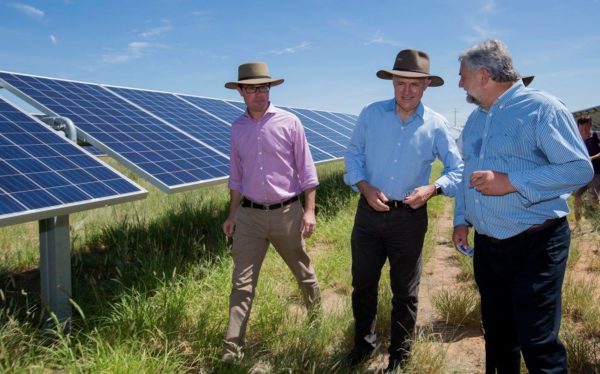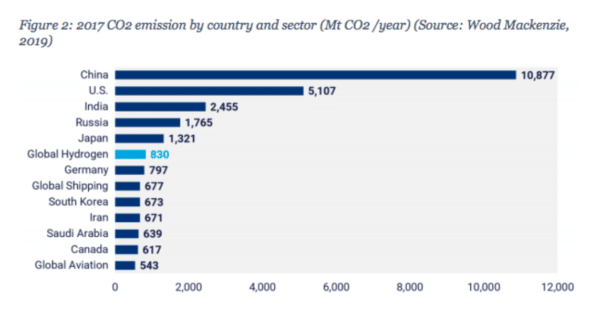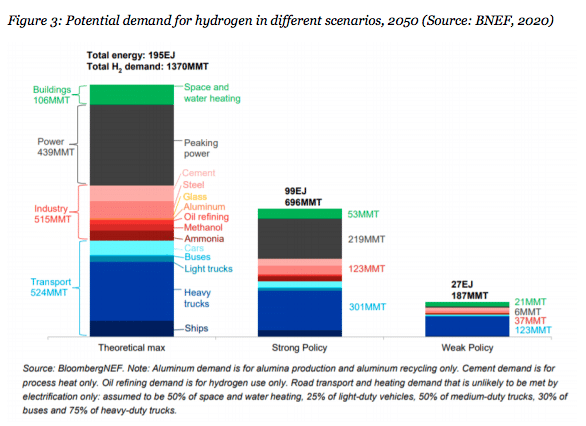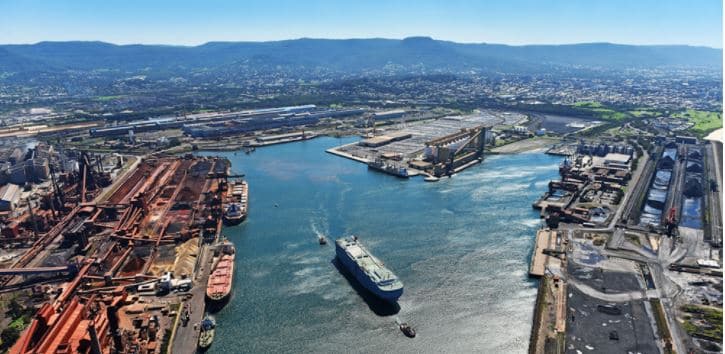Hydrogen. The universe’s smallest molecule today holds perhaps its loftiest promise. To realise this promise (that is, the decarbonisation of difficult to abate sectors) without falling into the ample traps set by incumbent systems, the transition needs to be thoughtfully designed.
Nicky Ison, WWF Australia’s Energy Transition Manager, tells pv magazine Australia four things need attention to safeguard our emerging hydrogen economy and ensure it begins clean and correct.
1. Stop using colours to describe hydrogen’s production origin
“There’s fossil fuel hydrogen and renewable hydrogen, and that’s the least confusing way of describing it,” Ison says, plainly.
Currently, the vocabulary around hydrogen’s origin is explained by a rainbow of colours, from green to blue to grey to brown. It’s confusing for people in the industry, let alone lay people.
In fact, former Prime Minister Malcom Turnbull also brought up the issue of hydrogen’s many colours at the Smart Energy Conference earlier this month, saying “green hydrogen is the only type of hydrogen we should be planning for.”
“Blue hydrogen” or hydrogen produced with fossil fuels where emissions are supposedly offset by carbon capture and storage (CCS) technology, Turnbull flatly called “B.S.” “There is no other colour [other than green] of hydrogen that you can responsibly support,” he said.

Image: Malcolm Turnbull / Facebook
The Smart Energy Council are working on this specific issue, introducing a Zero Carbon Certification Scheme to guarantee hydrogen and all its subsidiary materials are made completely from renewable energy.
2. Public money should only go to renewable hydrogen
The reason, Ison says, is that hydrogen produced using fossil fuels simply doesn’t hold any promise for a cost curve reduction since it is a mature industry. Renewable hydrogen, on the other hand, is emerging will inevitably drop in price significantly through economies of scale.
While renewable hydrogen is still significantly more expensive to produce today, Ison points back to 2009, when there was a huge cost difference between solar electricity and traditional electricity. Government backing of solar quickly closed that gap, getting Australia to where it is today (a country where solar is single handedly dropping electricity prices so low its sending coal out of business.)
Like wind and solar, the electroysers used to make renewable hydrogen are a modular technology, which means they will follow a similar trajectory down in terms of cost, especially with government backing.
The other reason that public money should be more shrewdly spent is, of course, to reach climate targets. “We should not be investing in technologies that are not zero emissions,” Ison tells pv magazine Australia. As obvious as this might seem, Australia’s federal government last month pledged $275 million to develop hydrogen hubs and along with it a cool $263.7 million for carbon capture and storage technology, giving a clear signal about what kind of hydrogen projects it plans to back.
3. Scale demand by decarbonising the existing hydrogen industry
Global hydrogen accounts for 1% of greenhouse gas emissions, so decarbonising the existing industry should be top priority, Ison says.

Around 98% of the hydrogen produced today uses fossil fuels in its production. This accounts for more CO2 emissions per year than the global aviation industry and global shipping, according to Wood Mackenzie analysis.
This, Ison says, makes it clear that hydrogen’s greening process needs to begin at home in the existing hydrogen industry.
4. Focus hydrogen’s applications on industrial process in particular
When renowned journal Nature published a piece from German-Swiss research team concluding the use of hydrogen-based fuels should be prioritised in sectors that are difficult to electrify, such as long-distance aviation, feedstocks in chemical production, steel production and high-temperature industrial processes, it caused stir.
“Hydrogen as a universal climate solution might be a bit of false promise,” it said. Ison largely agrees. She says the focus should be on integrating hydrogen where it’s needed most, not in areas where electrification is already established and working well, such as electric vehicles.

“Renewable hydrogen is absolutely essential for decarbonisation, but we shouldn’t waste it on processes where we could use renewable electricity directly,” Ison said.
If we focus on industrial applications, Australia will be able to export hydrogen, probably in the form of ammonia, Ison says. “But the biggest opportunity is actually is onshoring industrial processes.”
Role reversal
Our incumbent system is based on the characteristics of fossil fuels – which are expensive produce, but exceedingly cheap and easy to transport. Renewable energy, on the other hands, is cheap to produce but costly and difficult to transport.
If the ease of fossil fuel transportation meant manufacturing and industry could be pushed offshore where labour is cheaper, this model loses its legs as the world decarbonises. This shifts the foundational nature of the industrial sector globally.
Like the authors of the Grattan Institute’s ‘Start with steel’ paper, Ison says this shifts holds a lot of potential for Australia.
By bringing industrial processes like steel making and ammonia production back onshore, Australia could impel a manufacturing boom and the creation on new jobs industries, she says.
For example, Australia is net importer of ammonia and fertiliser (ammonia is a key ingredient of fertiliser). However, we do have ammonia production facilities concentrated in Western Australia and Queensland. We could decarbonise these existing facilities before ramping up production. This would reduce our reliance imports and then as thirst for clean supply chains grows, these production facilities would be in place to become an exporters, in turn driving jobs and local industrial growth.
Hydrogen was one of the most talked about issues at this month’s Smart Energy Conference. Australia’s Hydrogen Conference is set to kick off tomorrow also in Sydney’s International Convention Centre.
This content is protected by copyright and may not be reused. If you want to cooperate with us and would like to reuse some of our content, please contact: editors@pv-magazine.com.









Brilliant interview, Nicky, and I agree about the colours of hydrogen – better keep it simple. It’s also worth mentioning the potential to grow an Australian-owned hydrogen industry rather than letting multinationals sell our natural resources.
It’s hard to understand why the potential for cheap (but not transportable) renewables to bring mineral processing and manufacturing back onshore hasn’t gotten the Coalition government excited.